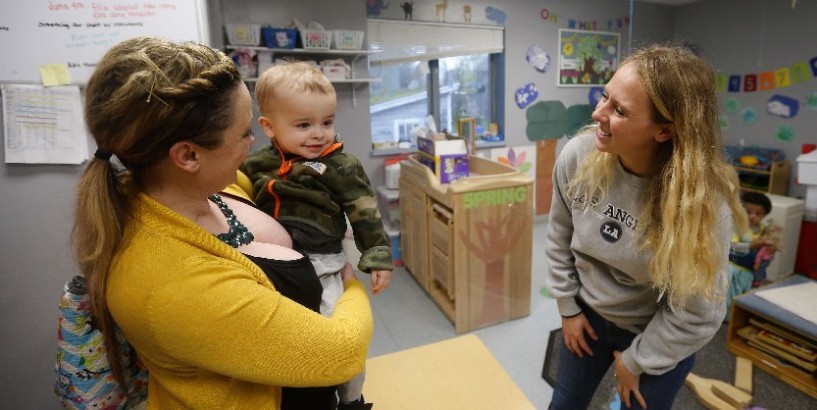Here’s something that state legislators should put at the top of their end-of-session agenda: child care deserts, which economically hobble parents who cannot work for lack of licensed, affordable places to care for their children.
Child care falls squarely within the bounds of constituent services. State Sen. Tim Kennedy and other state legislators passed a budget bill this year that created a tax credit worth up to $150,000 annually for employers who provide on-site day care.
That should not be the only way that Albany encourages such efforts, but it’s a start. The work should be turbocharged to assist single mothers like Jennifer Colon. She was what you might call a lucky one. She eventually found child care for her baby. Unfortunately, it’s a 45-minute drive from her home. Not everyone can manage that schedule.
She is not alone. Sarah Durham and Paul D’Angelo ran into problems finding adequate day care as their son approached his first birthday. It took nearly six months and the help of a child care advocacy group before they finally found placement. Durham is a pharmacist who can now start looking for work.
Erie County’s child care deserts are defined by census tracts with more than 50 children under the age of 5 but lacking licensed child care. The problem is especially acute in this area, with the top child care deserts in Buffalo spreading across sections of the West Side, East Side and North Buffalo. The suburban problem areas include sections of Grand Island, Lancaster, Aurora, Amherst and Clarence. Rural counties such as Chautauqua contain swaths of child care deserts.
Not even 658 day care facilities in Erie and Niagara counties satisfy the local need, considering Erie County has 120,000 children under the age of 12 and 85,000 live in households with working parents. If there are only 28,346 licensed day care slots in the county, where does that leave a mother, father, grandparent or guardian for whom affordable child care is the difference between poverty and a paycheck?
It’s not just Western New York. Across the nation, 51% of people reside in child care deserts, according to a study by the Center for American Progress.
Making the problem worse for day cares struggling to remain in business is a lack of child care workers. Those employees typically make less than $28,000 a year. With the unemployment falling to just 4.5% – a 30-year low in the Buffalo Niagara region – job candidates are especially hard to find.
The Child Care Resource Network provided Durham and D’Angelo with a streamlined list of day cares near their home and profiles on each of the facilities. But what about those who cannot afford the cost? Infant care in Erie County averages $13,000 a year, while toddler care costs around $11,000. The arrangements set up by many parents can be hit-or-miss and depend heavily upon family and friends who may have to alter their own schedules.
Sheri Scavone, executive director of the Western New York Women’s Foundation, described the lack of day care as “crisis level.” Kennedy is among the state politicians the foundation has worked with on the issue. The effort has been important in supporting legislation that has brought increased tax dollars to Erie County for child care subsidies to low-income families.
Even with systems already in place, many parents and guardians struggle to find adequate child care. It’s a problem that requires attention.
As their session draws to a close, state lawmakers should focus more intently on this critical issue. Given its complexity and costs, they will surely not be able to resolve the problem this session, but they need to start paying serious attention to it. A workable solution – or set of solutions – could free many parents up to find employment, potentially lowering social costs and increasing state tax revenues.









